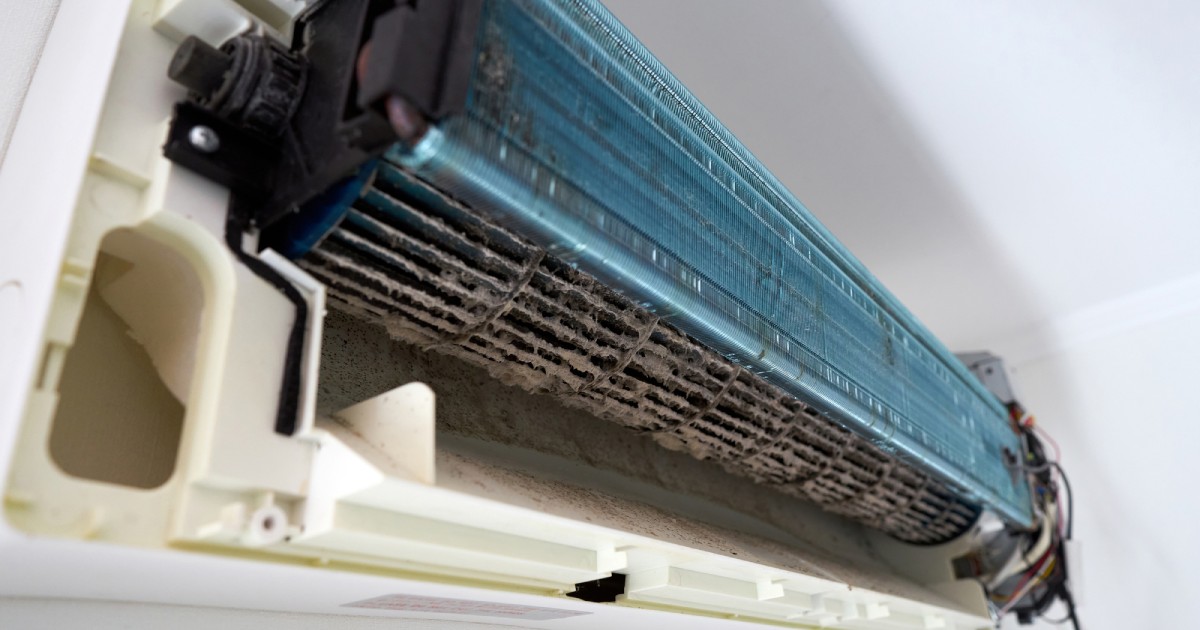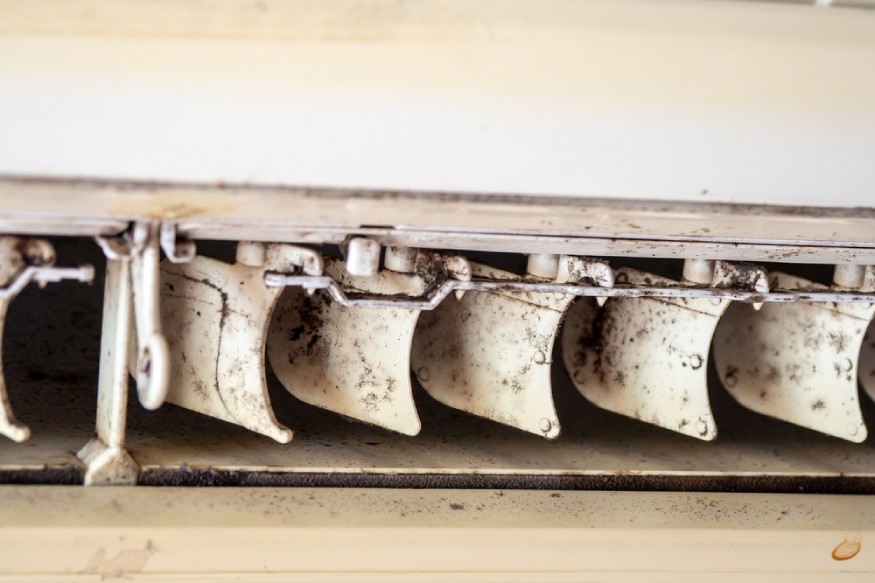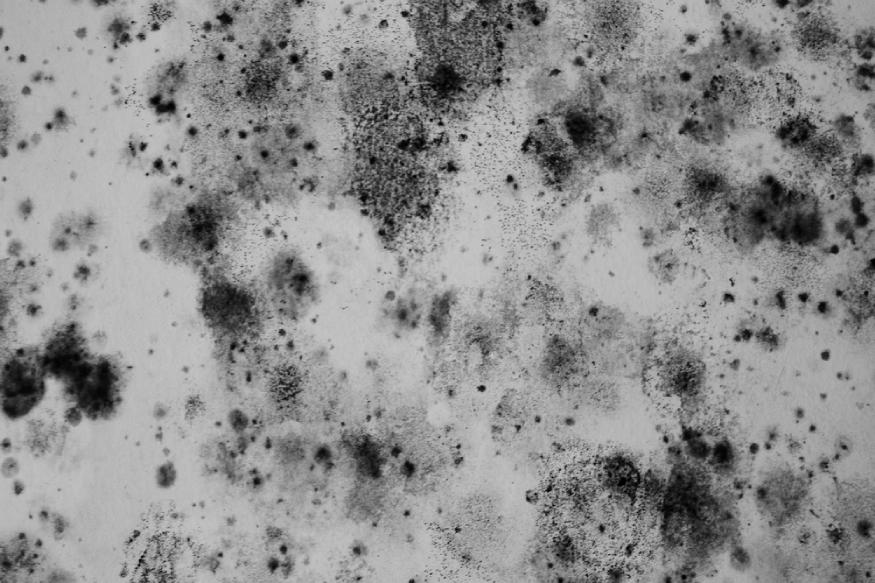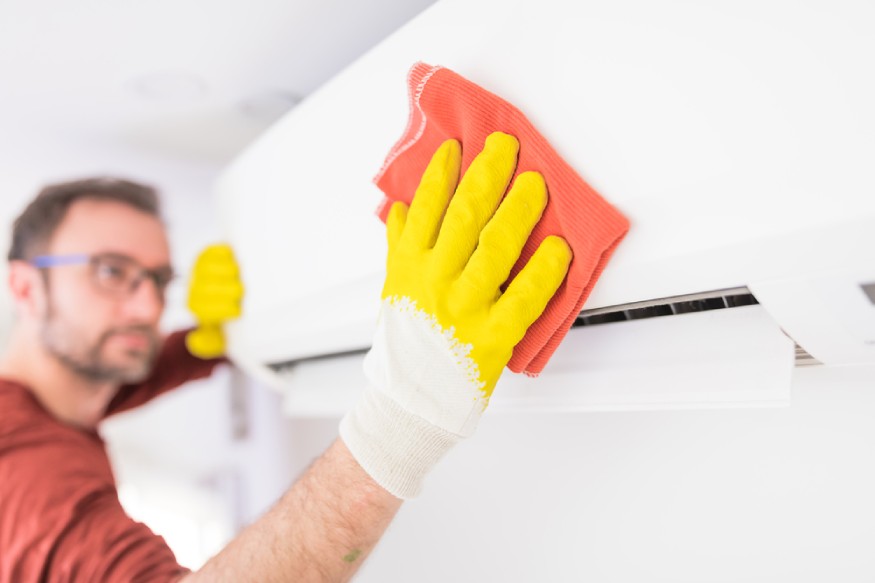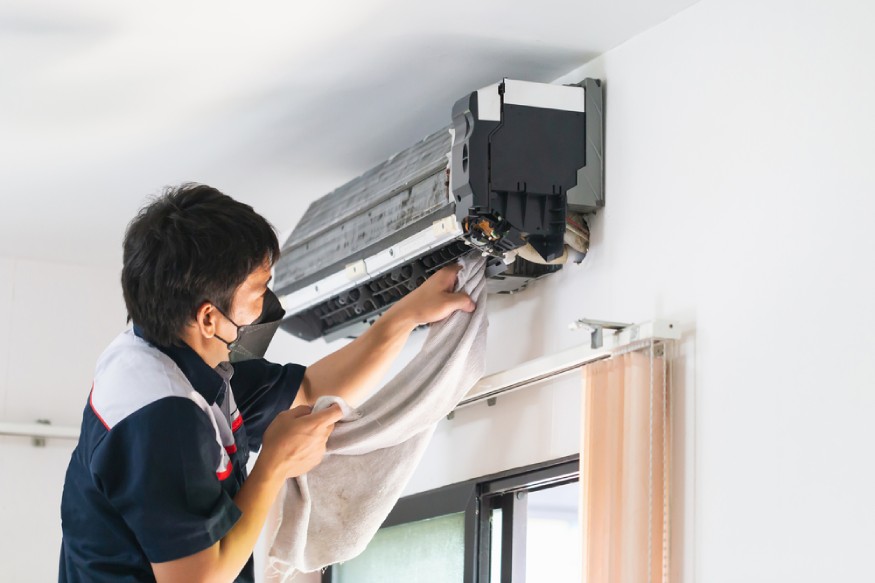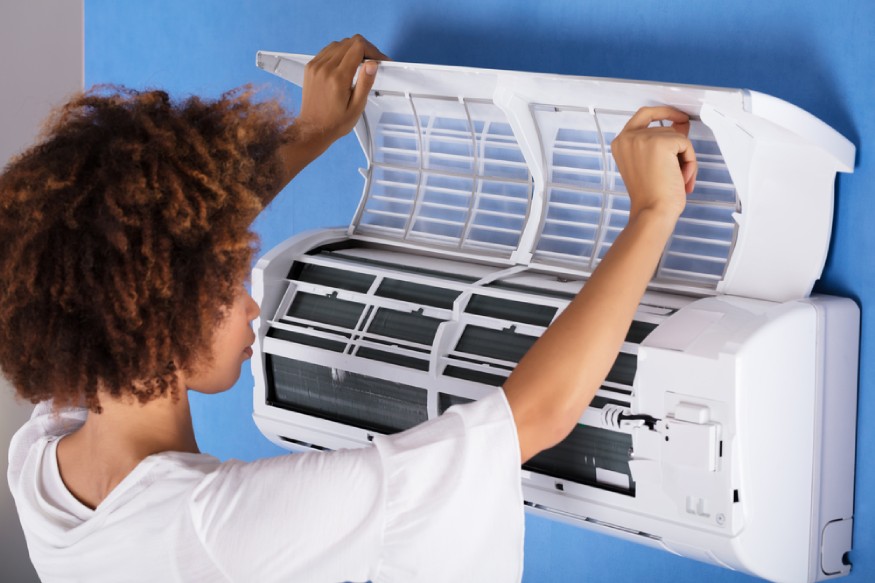If you’re a homeowner, there’s a good chance you rely on your air conditioner to keep you comfortable during the hot summer months. But what if that very AC unit is making you sick? Believe it or not, mold can grow in air conditioners and, if left unchecked, can cause some serious health problems.
So if you want to keep your family safe and healthy, it’s important to know how to detect, remove and prevent mold in your air conditioner. Read on to learn how mold grows in AC units, how to remove it from every type of air conditioner, and how to prevent it from forming in the first place.
How Does Mold Grow in Air Conditioners
Mold spores are everywhere, both inside and outside your home. They’re microscopic and float through the air undetected until they land on a moist surface with an organic food source. Once they land, they grow and multiply.
Organic food sources for mold range include:
- Wood
- Cardboard
- Dust
- Carpet
- Fabric
- And more
Air conditioners can be the perfect breeding ground for mold — condensation from moisture in the air and dust from your home can combine and make the ideal mix for mold. But how does this happen inside an AC unit?
Well, both dust and moisture are a normal part of how AC units work.
Your AC unit cycles air from inside your home. When it does this, it collects dust in its air filter. But, when the filter gets too dirty (a common AC problem), some of this dust can get to your evaporator coils too.
Usually, your air conditioner’s evaporator coils contain cold refrigerant. When warm air from your home blows across the coils, its heat transfers to the refrigerant. The now cold air circulates throughout your home.
But, when the air loses heat, it can’t hold as much moisture (due to a thermodynamic property). So, the water condenses on the coils, drips into a condensate pan, and drains out.
If moisture condenses on dirty evaporator coils and mold spores collect on them, it is just a matter of time before you have your very own mold colony growing in your home. That is why it is vital to control the humidity in your home and keep the AC unit clean.
Types of Mold Found in AC
There are many different types of mold, but here are the most common types found in air conditioners:
Stachybotrys
Stachybotrys, or “black mold,” is greenish-black in color and is the most common mold in HVAC systems. It is associated with poor indoor air quality since it releases toxins that can cause a variety of health problems in humans, including respiratory problems, skin irritation, and headaches.
Alternaria
Alternaria mold is often found in damp areas like showers and bathrooms, but it can circulate throughout your HVAC system too. It is the most common type of allergenic mold and can cause hay fever and upper respiratory tract infections.
Penicillium
Penicillium mold is often blue or green in color. Like other common molds, it can cause respiratory problems and allergic reactions too.
Aspergillus
Aspergillus mold is mainly found in soil, plants, and food. But, it is common in homes with excessive moisture too. Most members of the aspergillus are non-toxic, but they can still trigger an allergic response. Other members are toxic and can cause more severe health effects.
The Dangers of Mold in Your Air Conditioner
Mold spores can cause various health problems, including allergic reactions, asthma attacks, eye irritation, and respiratory infections. And if your AC unit has mold growing inside it, it will blow mold spores into the air every time it runs. This can worsen these health problems, especially for people with compromised immune systems or chronic lung disease.
That’s why keeping your AC unit clean and free of mold is so important. Otherwise, you and your family could be at risk for some serious health problems. So, if you have mold in your air conditioner, it’s essential to remove it as soon as possible to prevent these health problems.
How to Detect Mold in Your Air Conditioner
There are a few signs that you may have mold in your air conditioner:
- Black, green, or white growths on any surface in or near your AC unit
- Musty or mildewed odors coming from your AC unit
- Condensation or water droplets on any surface in or near your air conditioner
If you think you may have mold in your air conditioner, it’s important to have it inspected by a professional as soon as possible. They can use various methods to detect mold, including air sampling and surface testing.
How to Get Rid of Mold from Air Conditioners
Once you’ve detected mold in your air conditioner, removing it as soon as possible is important. You can do this yourself or hire a professional to do it for you.
If you’re removing mold yourself, it’s important to take the following precautions:
- Wear protective clothing, including a mask, gloves, and long sleeves
- Turn off your air conditioner before starting the removal process
- Clean all visible mold growth with a damp cloth
- Use a commercial mold remover or bleach solution to kill any remaining mold spores
- Dry out your air conditioner entirely before turning it back on
If you’re hiring a professional to remove the mold, ensure they have experience dealing with air conditioners. They should also be able to provide you with a list of references.
Here is how to remove mold from all types of air conditioners:
Window Units and Portable Air Conditioners
- Turn off the power to your air conditioner and remove the unit from the window (unless it’s a portable unit). Remove the front panel of the air conditioner and wash it with mild detergent. Rinse it with clean water and dry it thoroughly.
- Next, remove the filter and soak it in hot soapy water with about 1/3 to 1/2 cup bleach. Rinse it off after about a half hour and hang it to dry
- Remove the rear housing to expose the condenser coils.
- Vacuum out as much dust and dirt from the inside as you can.
- Spray commercial coil cleaner on the coils on the front and back of the AC unit. Let it sit and work its way into the mold.
- Wipe away the coil cleaner with a damp towel or rinse it with water.
- Wash the air conditioner’s inside with a sponge and a solution of 1 part bleach to 10 parts water. Rinse it with clean water and dry it thoroughly (wait about 24 hours to dry fully).
- Reassemble the air conditioner and install it back in the window. Turn on the power and let the unit run for a few hours to dry out any remaining moisture.
Mini Split AC
Cleaning mold from a ductless mini split heat pump differs somewhat from a window AC unit. However, the process is mostly the same; it is just that the components are located in different areas.
To remove mold from your ductless mini-split unit, follow many of the same steps for the window AC unit above. The only difference is that you will need to keep the indoor unit mounted on the wall while you remove the cover and filter.
Then, vacuum out the dust and dirt, spray coil cleaner on the coils, wipe it away after you let it sit, then wipe it down with bleach and water. Repeat the process for the outdoor unit.
Central Air Conditioners
Cleaning mold from a central air conditioner is a bit more complex than window AC units, portable air conditioners, and ductless mini-splits. This is because they have long runs of ductwork that travel through the walls to every room in your home.
Unfortunately, when you have a mold problem with a central air conditioning system, it is best left to professionals for cleaning. Turn off your air conditioner as soon as you detect a mold problem, and don’t apply any surface treatments or biocides in the ductwork, as the EPA recommends.
Instead, contact a local HVAC or mold remediation contractor to clean your ductwork.
Car AC
Mold can also grow in the air conditioning system of your car. The most common place for mold to grow is in the evaporator core.
To clean the mold from your car’s AC unit:
- You will need to remove the glove box
- Locate the evaporator.
- Once you have found it, unplug the electrical connector.
- Remove the screws that hold it in place.
- With the evaporator removed, you can now clean it with a rag and a mild detergent.
- Rinse it off and dry it completely before putting it back in your car.
- You may also want to consider replacing the cabin air filter, as mold spores can get trapped in there.
How To Prevent Mold From Growing In Your AC Unit
There are a few things you can do to prevent mold from growing in your AC unit:
- Change the filters regularly
- Keep all vents and registers unblocked and open
- Keep the area around your AC unit clean and free of debris
- Vacuum your home frequently– you will pick up dust, dirt, and hair, preventing it from entering your ductwork
- Remove any water that condenses on the unit immediately
- Run your air conditioner regularly, even if it’s not hot outside
- Ensure window units are snug and sealed in the window
- Empty portable AC units routinely
- Clean all moisture spills right away and address any leaks in your home quickly
- Have your air conditioner serviced by a professional at least once a year
- If you live in an area with high humidity, consider using a dehumidifier
Conclusion
Mold can grow in any air conditioner, from window units to central ACs. To clean mold from your AC, you will need to remove the unit’s cover, disassemble it and clean all of the parts with a rag and a mild detergent. You may also need to use bleach and water to remove tough mold stains.
For central AC units, it is best to contact a professional as soon as you detect a mold problem. They will be able to clean out your ductwork and prevent the spread of mold spores throughout your home.
You can also prevent mold by regularly changing your air conditioner’s filters, keeping the area around your AC unit clean, and running your air conditioner regularly. If you have high humidity conditions often, consider getting a dehumidifier.
